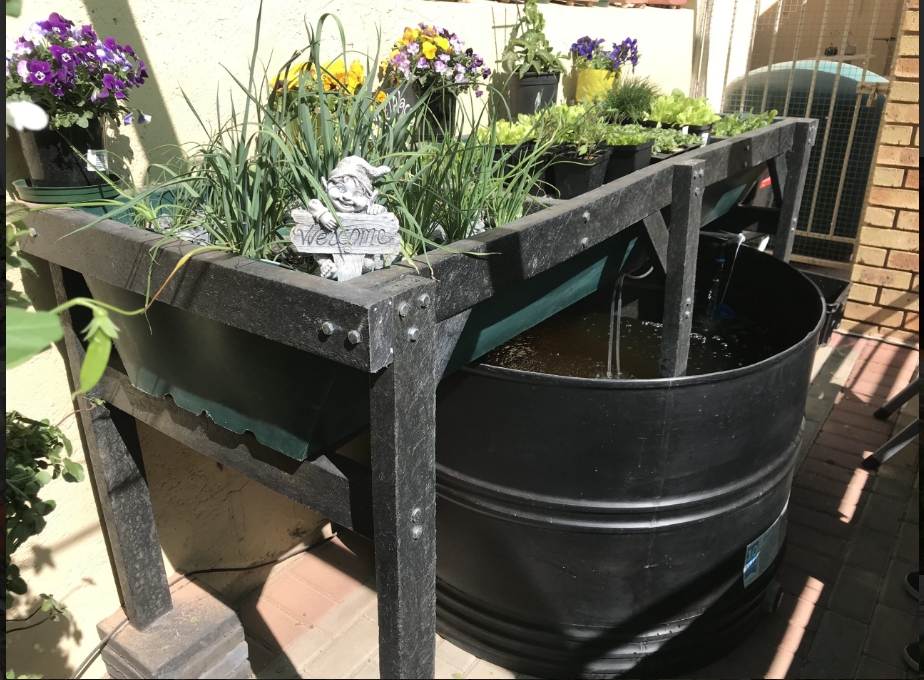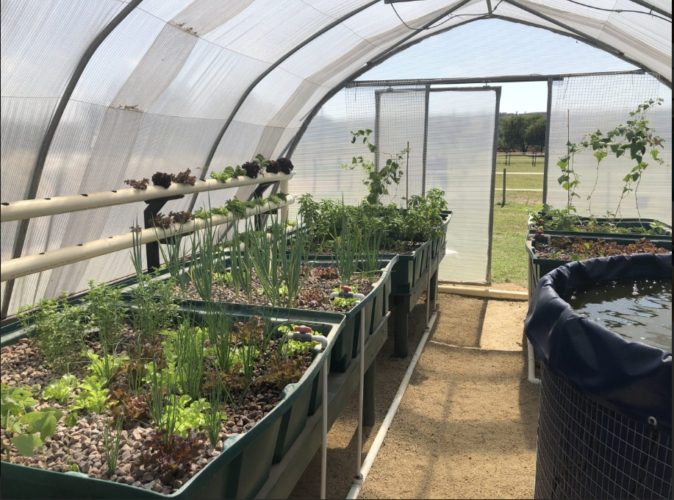If aquaculture is the fancy word for fish farming and hydroponics is the art of growing plants in water, then aquaponics is the practical combination of farming fish and growing plants together.
In an aquaponics set-up one grows fish in tanks or ponds. The fish have a diet of fish food suitable to their growth and health needs.
The water housing the fish, which over time will also contain fish waste, is then pumped into the plant growing beds and the plants in turn feed on the nutrients in the fish waste.
In this way the plants cleanse the water, so that it can be returned to the fish tanks for the process to begin anew.
To maximise the growth of both plants and fish, and to protect both from the elements, producers build large aquaponics systems under some sort of cover, usually a plastic-covered tunnel. This ensures sufficient light for both the fish and the plants and raises the temperature of the water for the fish. This in turn generally ensures faster growth, and protects all from wind, rain, hail and insects.
Although the capital costs of an aquaponics system, certainly at commercial scale, can be considerable, the benefits are also considerable.
Why choose aquaponics?
Firstly, the system is compact, with a lot of growth ~ both of fish and plants ~ taking place in a relatively small area. Secondly, because one controls aspects such as temperature and climate, both the fish and the plants grow more efficiently.
And, come harvest time, the aquaponics grower has the benefit of a harvest of high-value protein in the form of fish, and of whatever plants have been grown.
So, what kind of plants do producers grow in an aquaponics system? In a word, just about anything, although in reality it makes sense to concentrate on fast-growing, compact, and high-value species. And certain root crops will be unsuitable.
Thus, in the line of vegetables, plants that can be cropped multiple times such as tomato are preferable to those that are cropped once, such as lettuce.
Naturally, the more specialist the crop the better. The higher prices they will attract will make the enterprise more profitable.
Having made that point, it can also be highlighted that many aquaponic systems are established in an attempt to ensure local food security in impoverished communities. Here the need for nutritious protein and vegetables trumps the need for profit.
What Size System?
Smallholder-sized semi-commercial aquaponics systems provide a handy extra income. However, small hobby systems, which will provide fish and vegetables for a single household are also popular. This is especially true for somebody who wishes to learn the skills and techniques of successful growing without incurring the costs of possible disaster in a mismanaged large system.

Aquaponics is a highly specialised field. It requires both skills and knowledge in the field of aquaculture as well as of plant nutrition. So you need knowledfge of basic chemistry, horticulture, plant diseases and simple water engineering. Fortunately, courses are available through a number of service providers. Some of these will also offer mentoring and support, and consulting services in setting up and running aquaponic systems. They might also have shops supplying complete hobby kits, along with nutrients, pump components and even fingerlings.
Main Image: A hobby system from La Pieus Aqua Holdings
This is part of a series on Dams & Fish. For more, click here.

